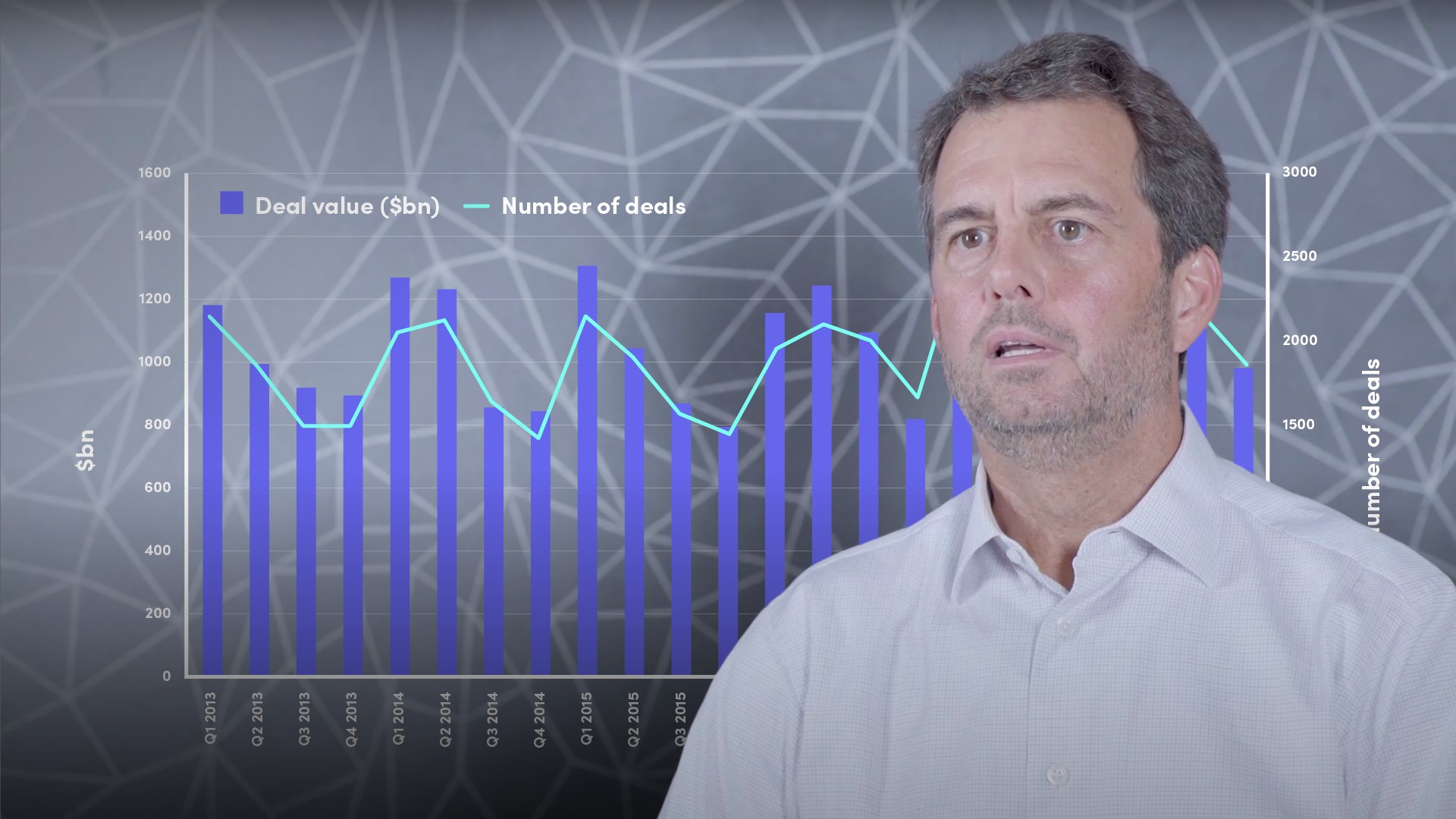
What Does DCM Do at a Bank?

Tim Hall
30 years: Debt capital markets
In this video, Tim gives an overview of the global bond market before going into the specifics of the DCM roles beyond assisting issuers to raise financing.
In this video, Tim gives an overview of the global bond market before going into the specifics of the DCM roles beyond assisting issuers to raise financing.
Subscribe to watch
Access this and all of the content on our platform by signing up for a 7-day free trial.

What Does DCM Do at a Bank?
24 mins 35 secs
Key learning objectives:
Identify the role of a DCM at a bank and the good qualities they possess
Explain the differences between loans and bonds
Discuss the role of Credit Agencies
Define Private Placements and describe their function
Overview:
The role of DCM at a bank is to work with potential issuers who wish to raise financing in the international capital markets by issuing bonds. Globally, there are around $4-5 trillion new issues each year. Also, the total amount of bonds outstanding was nearly $103 trillion at the end of 2018.
Subscribe to watch
Access this and all of the content on our platform by signing up for a 7-day free trial.
Who are the different issuers?
- The Public Sector (SSA) – this includes governments, agencies and supra-nationals, i.e. The World Bank or the European Union
- Financial Institutions – for example, banks
- Non-financial institutions – corporates
What is the DCMs focus, and how are they organised?
The DCM team is not involved in the secondary bond market (trading), but only in the primary, new issue business. The DCM sits in either a bank’s corporate coverage division or in a bank’s market division. DCM teams are organised by segment or geography. Geographically, the nucleus of a DCM team is located normally in centres such as New York, London, etc.
What are the differences between loans and bonds?
- Bonds are Public Market instruments that are sold to a large number of investors though a publicly-available offering document. However, loans are sold privately, i.e. Syndicated loans (not publicly available)
- Bonds typically have maturities of 3-10 yrs. The principal amount of a bond is due in its entirety at maturity date. Whereas for loans, the maturities are 3-7 yrs. The principal is repaid gradually over the life of a loan rather than in full at maturity
- Bonds have a fixed rate of interest – the coupon payments do not change during the life of the bond. For loans, the Interest rate floats over a bank reference rate, i.e. LIBOR, so interest payments change during its life.
- Bonds are rated by Major Global Rating Agencies whereas, loans are not rated
- Bonds are traded in the secondary market. However, loans are mostly not
What is the process for issuing a bond?
The issuance process follows this order before reaching investors:
- Issuers/borrowers (corporates, governments, banks etc)
- Debt Capital Markets
- Bond Syndicate
- Fixed Income Sales Team
- Institutional Investors
How are bond issues assessed?
Bond issues are generally required to be rated. Each rating corresponds with a different level of risk. Three of the most prominent rating agencies that issue bonds are Moody’s Investor Services, Standard & Poor’s and Fitch Ratings. These ratings agencies publish ratings on the specific bond issues.
When ratings are not aligned across different rating agencies, this is referred to as “split rating”.
The lowest investment grade rating is: BBB-/Baa3/BBB-, and the highest non-investment grade rating, or “junk” is: BB+/Ba1/BB+.
What are Private Placements, and how do the EU/US differ?
Although the large majority are offered broadly, there is a relatively small amount of public bonds that are issued privately, generally focusing on one investor or a very small group of like-minded investors.
Private Placement (EU) – An issue placed pursuant to publicly-available documentation that many high-tier frequent issuers keep current via regular updates. The umbrella programme is referred to as Euro Medium Term Note (EMTN). This allows issuance in much smaller sizes and on a quicker basis.
Private Placement (US) - This market involves companies issuing bonds privately to a group of insurance companies, for “buy & hold” to maturity purposes.
Unlike EMTN private placements, US private placements are not underwritten or publicly rated.
What are the key factors influencing the choice of lead manager?
- The amount that a bank is lending to a company
- Ensuring rotation, that all of their key banking relationships get bond mandates from time to time
What are qualities of a good DCM banker?
- Knowledgeable about the bond market
- Comfortable speaking with and pitching to potential issuers
- Good negotiation skills
Subscribe to watch
Access this and all of the content on our platform by signing up for a 7-day free trial.

Tim Hall
There are no available Videos from "Tim Hall"



























